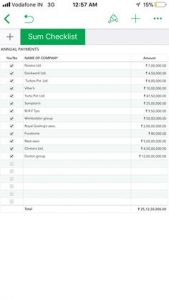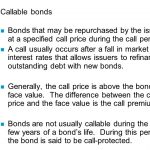What method is allowed under U S. GAAP to estimate uncollectible accounts receivable?
Content

Companies generally extend credit with repayment terms of 30 to 90 days. Some companies have lessened the repayment terms to 14 days in recent years. Learn accounting fundamentals and how to read financial statements with CFI’s free online accounting classes. When you decide to write off an account, debit allowance for doubtful accounts and credit the corresponding receivables account.
- This is recorded as a debit to the bad debt expense account and a credit to the allowance for doubtful accounts.
- Liquidity is measured by how quickly certain assets can be converted into cash.
- The allowance method uses an estimate of uncollectible expense, also known as bad debts expense, and does not predict which individual accounts will be written off.
- For example, say the company now thinks that a total of $600,000 of receivables will be lost.
- Rankin would multiply the ending balance in Accounts Receivable by a rate based on its uncollectible accounts experience.
When the account defaults for nonpayment on December 1, the company would record the following journal entry to recognize bad debt. There is always a risk that customers and other debtors might not repay you in business. When this happens, accountants call the amount owed uncollectible accounts receivable. Knowing what causes customers to default and what to do can help you create proactive strategies that reduce the risk.
Allowance Method For Uncollectible Accounts
Pursue problem accounts with phone calls, letters, and legal action if necessary. Ask potential customers for references from banks and suppliers and check the references. If there is no hope of collection, the face value of the note should be written off.
- Under the allowance method of accounting for bad debts, the company estimates the amount of bad debts before those debts actually occur.
- Many businesses use a more refined version of the percentage-of-receivables approach, known as the Aging of receivables approach.
- An allowance for doubtful accounts is established based on an estimated figure.
- The second method—percentage-of-receivables method—focuses on the balance sheet and the relationship of the allowance for uncollectible accounts to accounts receivable.
- Two methods are used by companies to estimate uncollectible accounts.
Material cost was budgeted for $5 per pound and the actual cost was $8 per pound. What would the debit or credit to the direct material efficiency variance account be for the current… Net receivables are the money owed to a company by its customers minus the money owed that will likely never be paid, often expressed estimate uncollectible accounts as a percentage. While calculating the cash payments for budgeted selling and administrative expenses, non-cash expenses like depreciation are also considered. Depreciation is an expense that reflects the cost of uncollectible receivables. This entry has no effect on Kenco’s carrying amount of receivables.
Business Case Studies
One of the first signs of a business downturn is a delay in the payment cycle. These delays tend to have ripple effects; if a company has trouble collecting its receivables, it won’t be long before it may have trouble paying its own obligations. A factor is a finance company or a bank that buys receivables from businesses for a fee and then collects the payments directly from the customers.

Oftentimes, it becomes necessary to secure payment in advance or receive some other substantial guaranty such as a letter of credit from an independent bank. All of these steps are normal business practices, and no apologies are needed for making inquiries into the creditworthiness of potential customers. Notes receivable are frequently accepted from customers who need to extend the payment of an outstanding account receivable, and they are often required from high-risk customers. Because of its emphasis on time, this schedule is often called an aging schedule, and the analysis of it is often called aging the accounts receivable. Estimated uncollectibles are recorded as an increase to Bad Debts Expense and an increase to Allowance for Doubtful Accounts through an adjusting entry at the end of each period. Use of the direct write-off method can reduce the usefulness of both the income statement and balance sheet.
Direct write-off method
For example, for an accounting period, a business reported net credit sales of $50,000. Using the percentage of sales method, they estimated that 5% of their credit sales would be uncollectible. GAAP requires that businesses extending credit to customers use the allowance method, which means they estimate uncollectible accounts. Companies use a few different types of methods, usually based on their past experience with bad debt. \nGAAP requires that businesses extending credit to customers use the allowance method, which means they estimate uncollectible accounts.
Why do we estimate uncollectible accounts receivable?
An estimate is required because it is impossible to know with certainty which accounts outstanding at the end of the year will become uncollectible during the next year. This estimate is usually recorded through an adjusting journal entry at year-end.
Once this account is identified as uncollectible, the business will record a reduction to the customer’s accounts receivable and an increase to bad debt expense for the exact amount uncollectible. All sales made on credit, and cash collections on account totaled $750,000. After analyzing the ending balance of $250,000 in Accounts Receivable, management estimated that $12,500 of these accounts would ultimately become uncollectible.
Business Operations
Prepare any journal entries required to adjust the cash account at November 30. But, when compared to industry trends and prior years, they will reveal important signals about how well receivables are being managed. In addition, the calculations may provide an “early warning” sign of potential problems in receivables management and rising bad debt risks. Many countries have very liberal laws that make it difficult to enforce collection on customers who decide not to pay or use “legal maneuvers” to escape their obligations.

How do you calculate estimated uncollectible accounts?
The allowance for uncollectible accounts is calculated by multiplying the receivable balance in the various aging categories (see table below) by a reserve rate. A higher reserve rate is applied to older receivables because those receivables are less likely to be collected.









You must be logged in to post a comment Login